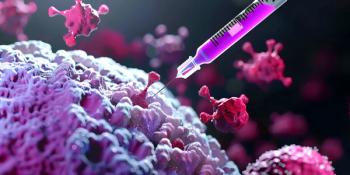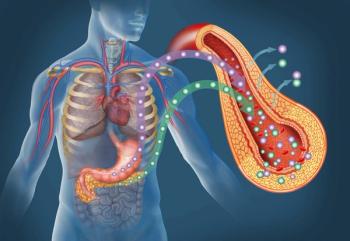
Potential Treatment Target for Autism Spectrum Disorder Discovered
Protocadherin 10 may affect social interaction in patients with autism spectrum disorder.
Investigators in a recent study identified a drug target that may increase social interaction in patients with autism spectrum disorder.
Symptom management is currently the only available treatment for patients with autism spectrum disorder. Many patients may take
Patients can take medications to treat anxiety, depression, irritability, and other associated symptoms, but there is no treatment for the core social interaction deficits. The behavioral symptoms have been attributed to abnormal connections between neurons, but the molecular reasons behind autism spectrum disorder (ASD)-related behavioral and brain physiology are unknown, according to a study published by Biological Psychiatry.
“This research could significantly change our understanding of the causes and brain changes in autism and could lead to new treatment approaches for the harder-to-treat social aspects of ASD,” said senior author of the study Edward S. Brodkin, MD.
Other studies have suggested that Protocadherin 10 (PCDH10) plays a role in autism spectrum disorder. This molecule is involved in brain development and the maintenance of synapses.
It is also highly expressed in the amygdala, a part of the brain that regulates emotion and motivation, and is often implicated in social deficits associated with ASD. Investigators in the current study examined mouse models with deletions of the Pcdh10 gene.
They discovered that mice with 1 of 2 copies of the Pcdh10 gene deleted, called Pcdh10+/- mice, demonstrated social withdrawal common in humans with autism spectrum disorder. They saw this occurrence in male mice more often than female mice, which is consistent with more human males being affected by the disorder than females.
Male Pcdh10+/- mice also had anomalies in the structure and function of the amygdala circuitry, according to the study. These mice also had lower levels of NMDA receptor subunits, a glutamate receptor in the amygdala.
To resolve this issue, investigators gave the Pcdh10+/- mice d-cycloserine, a drug that binds to the glycine binding site on the NMDA receptor and boosts glutamate signaling.
“By enhancing NMDA-receptor signaling, the mice went from social avoidance to more typical social approach behavior,” Dr Brodkin said.
This drug has been shown in other studies to elicit these effects in older adolescents and young adults with autism. These new findings may incite other investigators to explore d-cycloserine, or related medications, as a treatment for autism spectrum disorder.
Investigators plan to conduct future studies involving the mouse model to examine why male Pcdh10+/- mice have more severe social withdrawal compared with female counterparts.
This future study may reveal the reasons behind the male prevalence of autism spectrum disorder, and a more detailed analysis of amygdala circuit functioning, which could lead to potential treatments, the study concluded.
Newsletter
Stay informed on drug updates, treatment guidelines, and pharmacy practice trends—subscribe to Pharmacy Times for weekly clinical insights.














































































































































































































